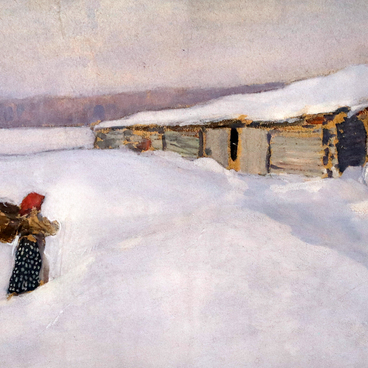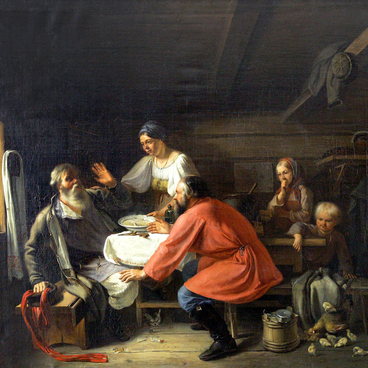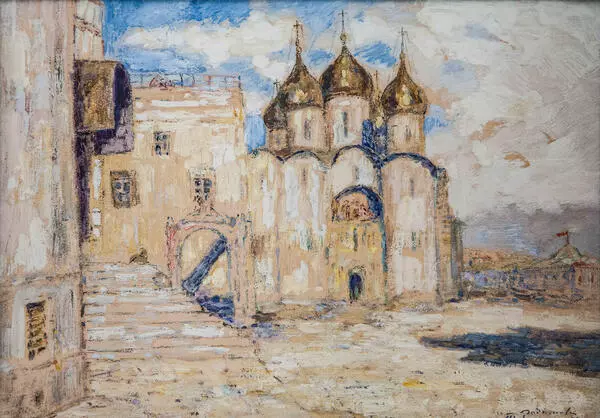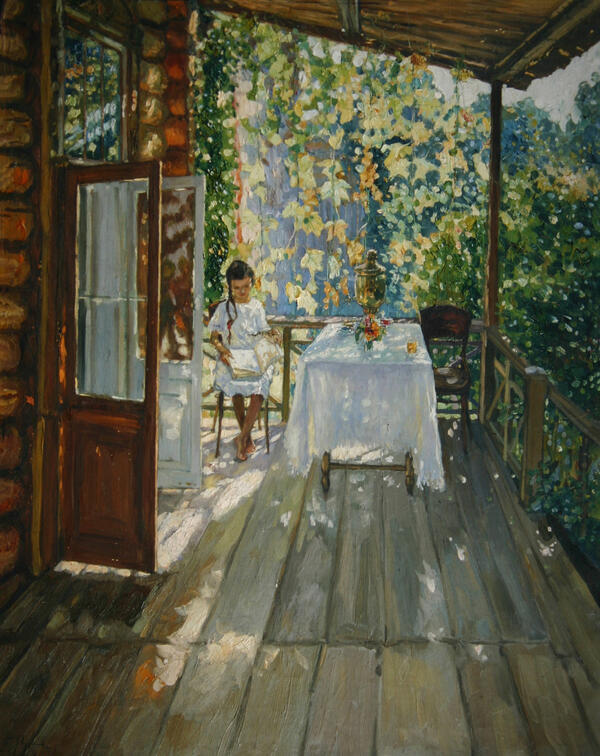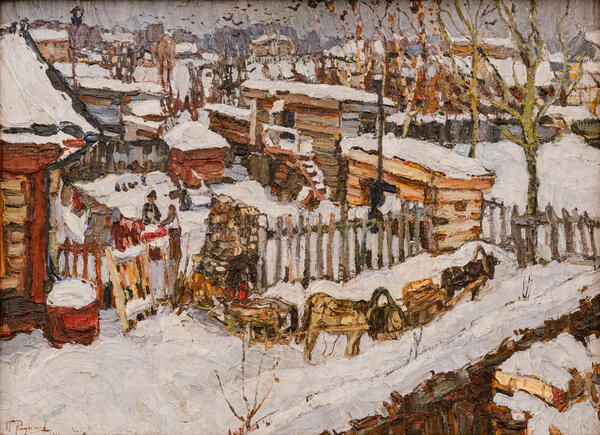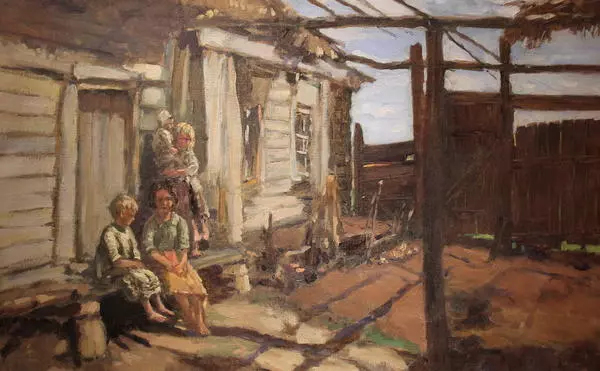The “peasant poet” and artist Pavel Alexandrovich Radimov was born in Ryazan Governorate in 1887. He was brought up in the family of a hereditary priest. He and his brothers were given an ecclesiastical education.
He gave up the ministry at the age of 18 and went to Moscow, where he took drawing lessons. Having failed to pass the exams at the Moscow School of Painting, Sculpture and Architecture, Radimov moved to Kazan in 1896. Soon he entered the faculty of philology.
At the age of 24, he graduated from the university. During that time, he studied painting, taking lessons from the artist Nikolai Ivanovich Fechin.
In 1912, his first book of poems “Field Psalms” was published.
At that time, Radimov created paintings. In 1911, he presented them at the exhibitions of the Society for Travelling Art Exhibitions, and in 1914 he became a member of this group for the painting “The Old Mezzanine”.
Before 1917, Radimov taught art history at the Kazan Art School. Later, he was appointed head of the Art Department of the People’s Commissariat of Education of the Tatar Autonomous Republic.
The artist became involved in cultural and propaganda work, and continued to engage in poetry and painting.
In 1918, he was elected head of the Society for Travelling Art Exhibitions.
Pavel Radimov made a great contribution to the development of professional painting in the Mari region. In May 1918, together with the artist Grigory Medvedev, he brought the Volga-Kama Traveling Exhibition of 40 paintings from Kazan to Kozmodemyansk. The purpose of the exhibition was to bring art closer to the people. Kozmodemyansk was the first and the last town to host the Volga-Kama Traveling Exhibition.
In 1919, on the initiative of local teachers and with the support of the public activist Alexander Grigoriev, a local history museum with a fine arts department was opened. The paintings of the Volga-Kama exhibition laid the foundation of the collection.
In 1922, Pavel Radimov took part in establishing the Association of Artists of Revolutionary Russia. It was also at that time that he published the collection of poems “Village”, whereupon he was elected chairman of the All-Russian Union of Poets.
From the 1930s to 1940s, the artist lived and
worked in the Moscow region. In 1957, he opened the People’s Exhibition in
Abramtsevo with free admission. The last lifetime exhibition devoted to the 75th anniversary of the artist was held in Moscow in 1962. He died at his home in
Khotkovo in 1967.

